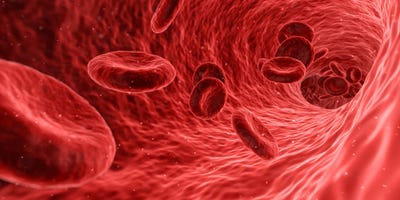July 19, 2017
A new technology in development by Sensome aims to reliably identify biological tissue to help doctors understand the composition of blood clots that result in stroke -- leading to quicker and more effective treatment.
Kristopher Sturgis

Sensome, a company focused on developing new micro-sensor technologies for medical devices, announced this week that it raised new funds to take its flagship technology, the connected stroke guidewire, into clinical trials. The new micro-sensing technology was designed to sense the composition of blood clots and relay that information into machine learning algorithms that can provide physicians with critical insights.
Machine learning, or artificial intelligence, is really beginning to make its mark in medical technology. Qmed recently analyzed 10 was AI is disrupting medicine. Qmed recently analyzed 10 was AI is disrupting medicine.
Franz Bozsak, CEO and co-founder of Sensome, said the new technology is unlike any other device on the market for blood clot identification, and would be an ideal solution for helping doctors outline the best course of treatment for clots.
"We are not aware of any comparable technology," Bozsak said. "Scientists have unsuccessfully tried to identify clots using imaging technologies like MRI or CT scans for years. Knowledge of the clot composition will allow physicians to choose the most effective thrombectomy strategy for a given patient, cutting the time of the intervention to a minimum -- meaning in minutes instead of hours -- and thus increasing the chances of recovery for the patient after the stroke, as well as cutting costs of the intervention and subsequently the healthcare system."
Bozsak said the device itself uses micrometric impedance sensors via an electrical current that are coupled with advanced machine learning algorithms that can help identify biological tissue. This means that when the technology is used on a stroke patient, the device could identify whether or not a blockage is a white blood clot or a red blood clot. This type of knowledge can allow doctors to select the appropriate intervention method, saving time and improving treatment.
"The uniqueness is two fold," he said. "First, our sensor design allows identification of the tissue with a specificity and reliability close to 100% accuracy. The second is that we can integrate this technology into a film that is only 10 micrometers thick. This allows us to integrate this technology with any medical device without impairing the performance of the device. Both of these characteristics are key to developing meaningful and useful medical devices for physicians."
The announcement this week saw Sensome raise nearly $5.4 million in seed funding from venture capital firm Kurma Diagnostics and other investors. The new funds will enable the company to take its new technology into clinical trials.
"Most of our extensive research and design was done in vitro so far, on porcine and human blood," Bozsak said. "We have tested the sensing technology also in two animal trials, and the fully functional device will now go into preclinical testing this fall, and we anticipate human trials in 2018."
With the funding now taken care of, Bozsak said the company hopes to have a CE marking for the device by 2019, and an FDA clearance shortly after. He said the versatility of the device is what will hopefully help the technology leave such a transformative mark, specifically in the realm of tissue identification.
"We initially started the company with the goal of integrating this technology with coronary stents," he said. "But we shifted last year to integrate it with a neurovascular guidewire. This strategic shift is an example of the versatility of our technology, which can now be integrated with any medical device. Whenever having tissue-based information can be decisive for the treatment of a patient, we want our technology to be inside the device. This has the potential to touch the lives of millions of patients all over the world suffering from cardiovascular disease or cancer. Today, we are not aware of any other technology that can provide this kind of situ tissue information."
Kristopher Sturgis is a contributor to Qmed.
[Image credit: Pixabay]
About the Author(s)
You May Also Like


